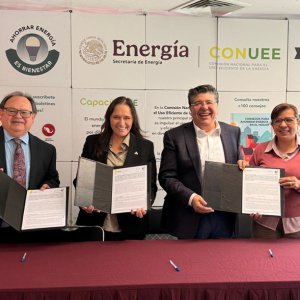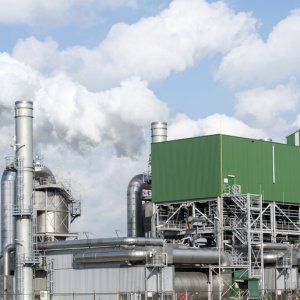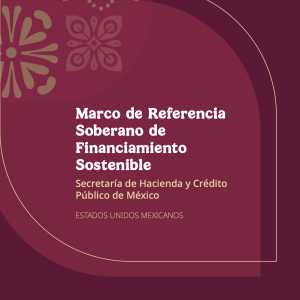Tech Solutions for Energy Management

STORY INLINE POST
Q: How does Nxtlab maximize benefits while minimizing risks on behalf of its clients?
A: We created a two-tool methodology for the different aspects of a PPA, following the final decision of the end user. This methodology is based on the client’s consumption profile, the contract term and the pricing. We build an all-in plan that considers energy consumption, possible penalties and forecasts. These plans consider our clients’ best interest because we operate independently of energy providers.
The other tool applied through this methodology allows clients to monitor the PPA at different points in time to reduce their carbon footprint and costs. The energy efficiency aspect of the methodology offers a three-dimensional matrix that allows clients to monitor energy consumption and volumes.
We track how clients reduce costs in the per unit tariff, the all-in price multiplied by the volume, which easily translates to a benefit for the company’s bottom line. We also track the footprint of that electricity to see if there is an emission reduction from the energy source.
Q: How do you help clients choose which platform to use between Arena, Sigen and Vortex?
A: Sigen and Arena operate under two different regulatory frameworks. Sigen focuses on the self-supply regime of legacy contracts based on the virtual energy bank developed under the Mexican regulatory framework for intermittent renewables. This framework was developed in 2008-2009, when the country had its first large-scale renewable energy projects.
Arena is a response to the 2013-2014 Energy Reform, which led to a new electricity market. Arena allows our customers to do transactions in the wholesale electricity market. The main difference among the two is that we created Arena afterward to address Mexican regulation and with a Mexican team.
Vortex also is a response to the needs of end-users. It allows energy consumers to reduce the barriers to entry to the wholesale electricity market. It was designed to help them put their own PPAs in place and to validate the implementation of the documents they sign. We replicate the monthly invoicing process with them and validate the process from the end-user perspective. Vortex has a user-friendly graphic interphase, which makes it easy to see four or five graphs simultaneously. It can easily translate black and white contracts and the formulas from annexes.
Q: What unique challenges do legacy projects face and how can you help companies to minimize them?
A: There are two main variables to track in relation to intermittent legacy contracts: the volume committed and precise tracking of energy generation. For the latter, one of the main tools that the regulatory framework provided for legacy contracts was the virtual energy bank, a complex tool that benefits the generator.
The current discussions on the Energy Reform have put self-supply legacy contracts under strict review, with some questioning their legality. We are helping our clients migrate from the legacy contracts to the wholesale electricity market. Most clients understand the basic elements of those legacy contracts and are comfortable with that regulatory framework but the government is seeking to change the way they currently operate .
At first, the goal of the proposed reform was to eliminate the wholesale electricity market as a whole but its scope has changed. Here is where we want to be part of the solution. The best solution would be to solidify the market rather than eliminate it. The sector is at an impasse. Having two different regulatory frameworks has caused tension between legacy contracts in the wholesale electricity market and market participants.
Q: What is the main trade-off the company proposes for entering the wholesale market?
A: The country’s goal is to incentivize the energy transition with intermittent renewables. There are other incentives, such as the clean energy certificates that are not available for the legacy contracts. Acquiring 100 percent clean energy is also not mandatory for end users but it is achievable. We are working with our clients to achieve this. Losing those benefits and subsidies will increase the operating costs of the legacy contracts
Q: The Mexican energy sector has been suffering losses and congestion. What solutions does the company provide its clients to minimize risks?
A: We have a number of tools to evaluate risks. We have created a congestion radar that studies where the asset will be installed and its injection point. We put all the main load zones on radar to define where it would be more convenient to shift the energy and to find end users.
Q: What are the company’s objectives for 2022?
A: We want to be part of the solution by solidifying the existing wholesale electricity market and fostering the transition of the legacy contracts. We are also working on origin certifications for electricity, using blockchain. When we decided to focus on Vortex, we saw that end users were poorly attended and they faced important barriers to entrance in the shape of complex PPAs. We also believe that they are the most important piece of the equation since the will lead the energy transition by demanding cleaner and cheaper electricity. We are here to help them achieve this common goal.
Nxtlab, founded in 2008, is an energy software specialist that provides comprehensive energy management and business intelligence, both for the wholesale electricity market and self-supply legacy projects.








 By Sofía Hanna | Journalist and Industry Analyst -
Tue, 01/18/2022 - 11:10
By Sofía Hanna | Journalist and Industry Analyst -
Tue, 01/18/2022 - 11:10















